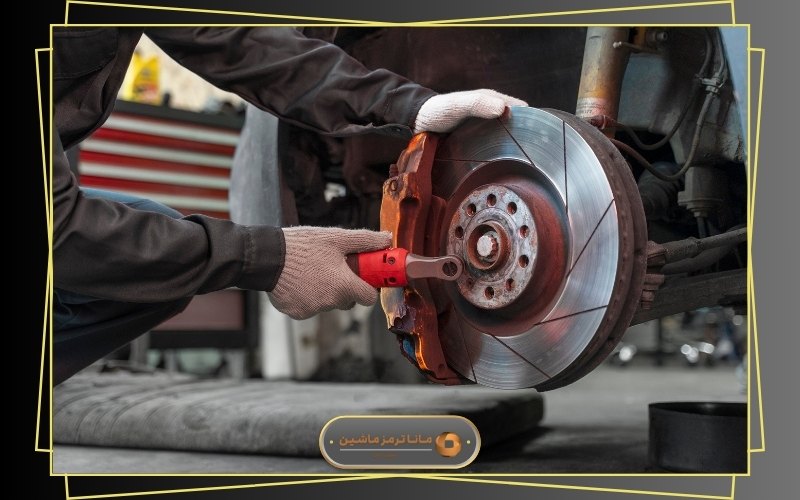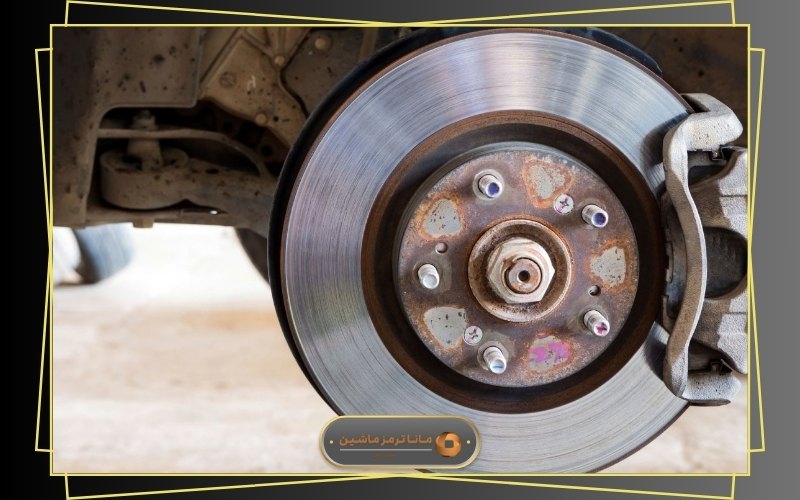It must be said that one of the key factors affecting the proper performance of the braking system is the correct installation of brake pads. Failure to do so can pose a serious threat to the vehicle’s occupants. Additionally, drivers should regularly inspect the brake discs and pads to determine whether they have reached their wear limit, and before replacing the pads, they must check all components related to the axle and hydraulic system, replacing any damaged parts. In this article, based on current standards, we aim to provide information about how to replace brake pads and related topics so you won’t encounter problems during the process. So please stay with us until the end.
What Is a Brake Pad?
A brake pad is a component used in a vehicle’s braking system to stop or slow down the vehicle. These pads are typically made of metal and are connected to the vehicle’s brake calipers. Brake pads come in various types. For example, one of the most popular types is the disc brake pad, used in disc brake systems. It consists of a metal pad that presses against the brake disc surface. Failing to replace disc brake pads on time can lead to damage to the brake disc itself.
Another type is the drum brake pad, which is used in drum brake systems. Due to the larger space between brake components, drum brake pads may sometimes have a longer lifespan than disc pads. Using quality brake pads is crucial for vehicle safety; without them, the vehicle cannot stop quickly, which can lead to serious accidents. Also, brake pads have varying lifespans depending on their materials, brand, and quality.
Brake Pad Replacement Guide
As you know, the brake system is one of the most important and essential components for vehicle safety, and brake pads form a vital part of this system. Brake pads are crucial parts of a car’s braking system, responsible for creating friction between the brake discs and the brake pedal. Essentially, the faster this friction is generated, the higher the quality of the brake pad. However, it is clear that every component has a lifespan, and after that period, it must be replaced; otherwise, it could endanger the safety of the passengers. Brake pads must be replaced at the right time to ensure the safety and performance of the vehicle’s braking system. Therefore, drivers should not neglect this issue and must replace both front and rear brake pads when necessary. In the following, we’ll share some important tips on replacing car brake pads.
Measuring Brake Disc Thickness
At this stage, you need to measure the brake disc using a suitable caliper. Pay special attention to the minimum thickness. Keep in mind that the disc thickness should not fall below the allowable minimum by the end of the new brake pad’s lifespan. Also, depending on the type of braking system, the wheel bearing or the ring sensor (also known as the conical bearing) may need to be replaced.
Removing Rust from the Contact Surface and Wheel Hub
After removing the old brake discs, it’s best to clean the contact surface and the edges of the wheel hub using suitable tools such as a wire brush, sandpaper, or other proper equipment to completely remove rust. Be careful not to damage the wheel hub during cleaning. Also, the brake caliper, which is still connected to the hydraulic system, must be secured in such a way that no pressure is applied to the brake hose.
Brake Pad Installation Guide: Cleaning the Contact Surface and Wheel Hub
If you intend to clean the metal contact surfaces, you should use a cleaner and polishing spray to do so. Additionally, it is recommended to inspect the cleaned wheel hub using a proper measuring tool—usually a dial gauge with a stand—to ensure there is no corrosion or damage. Also, carefully check the hub mounting surface for cleanliness and any potential damage.
Rust Removal from the Brake Cylinder Mounting Plate and Guide Shaft
Depending on the design of the part, use a wire brush or a stiff file to remove rust and sticky residues from the caliper bracket and guide pins. Be cautious during this process to avoid damaging the brake caliper bracket, and visually inspect for any signs of damage so you can address them immediately if needed.
Greasing the Brake Cylinder Guide Surfaces
Lubricate the cleaned guide surfaces of the brake cylinder using high-temperature grease that does not contain solid materials such as metal. Make sure not to use copper-based grease, as it can cause damage to the components.
Installing the Brake Disc
To install the brake disc, place it onto the wheel hub and secure it in place using its bolts, depending on the type of system. It is recommended to check the installed disc using a dial gauge, positioning the gauge approximately 15 mm below the outer edge. For convenience, perform the measurement with the wheel mounted.
Return the Brake Piston to Its Original Position
To prevent the piston from getting compressed or deformed, return it to its original state using the appropriate tool. When doing this, make sure to consider the type of caliper or braking system, the manufacturer’s requirements, and the tools they recommend.
Greasing Connection Points
Note that for this step, you should not use anti-noise greases or metal-based lubricants on the back of the brake pads, such as on shims or soundproofing layers. Greasing is only necessary for the contact points between the pad and the guide pin. If you have no prior experience with this, it is best to follow the advice and instructions of the vehicle or parts manufacturer.
Brake Pad Installation Summary
As mentioned, the correct installation of brake pads is essential for the optimal performance of the braking system. Most manufacturers make these pads from metal, and they are used in the vehicle’s braking system. Brake pads come in two types: disc and drum. Disc pads are used in disc brake systems, while drum pads are used in drum brake systems.
Drivers should regularly inspect the condition of their brake pads and replace them at the right time. It is also recommended to consult a professional mechanic before performing the replacement. Before beginning, measure the brake disc thickness, and after removing the old disc, clean and remove rust from the contact surface and wheel hub. Ensure the brake caliper is secured in a way that does not apply pressure to the brake line, and lubricate the guide surfaces of the brake cylinder with heat-resistant grease.
Then, install the new brake disc onto the wheel hub and return the brake piston to its original position. Finally, apply grease only to the contact points between the brake pad and the guide pin.



